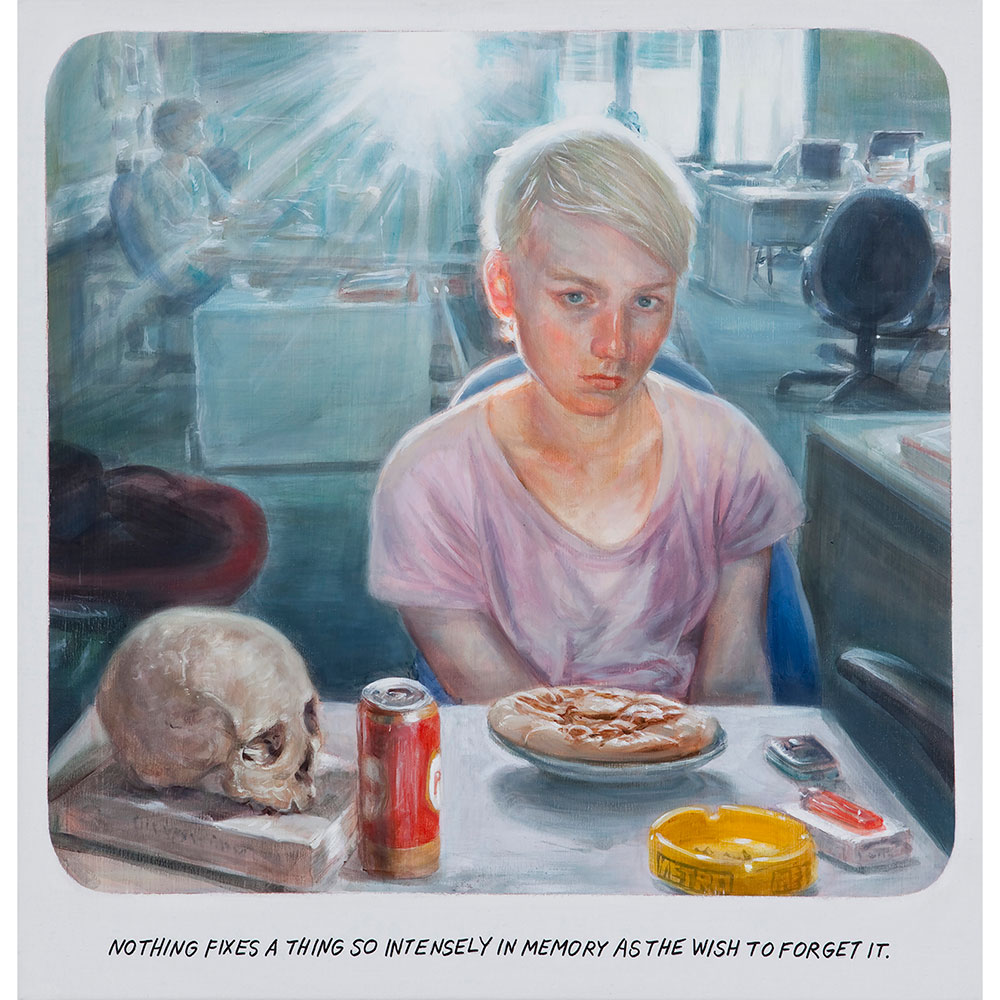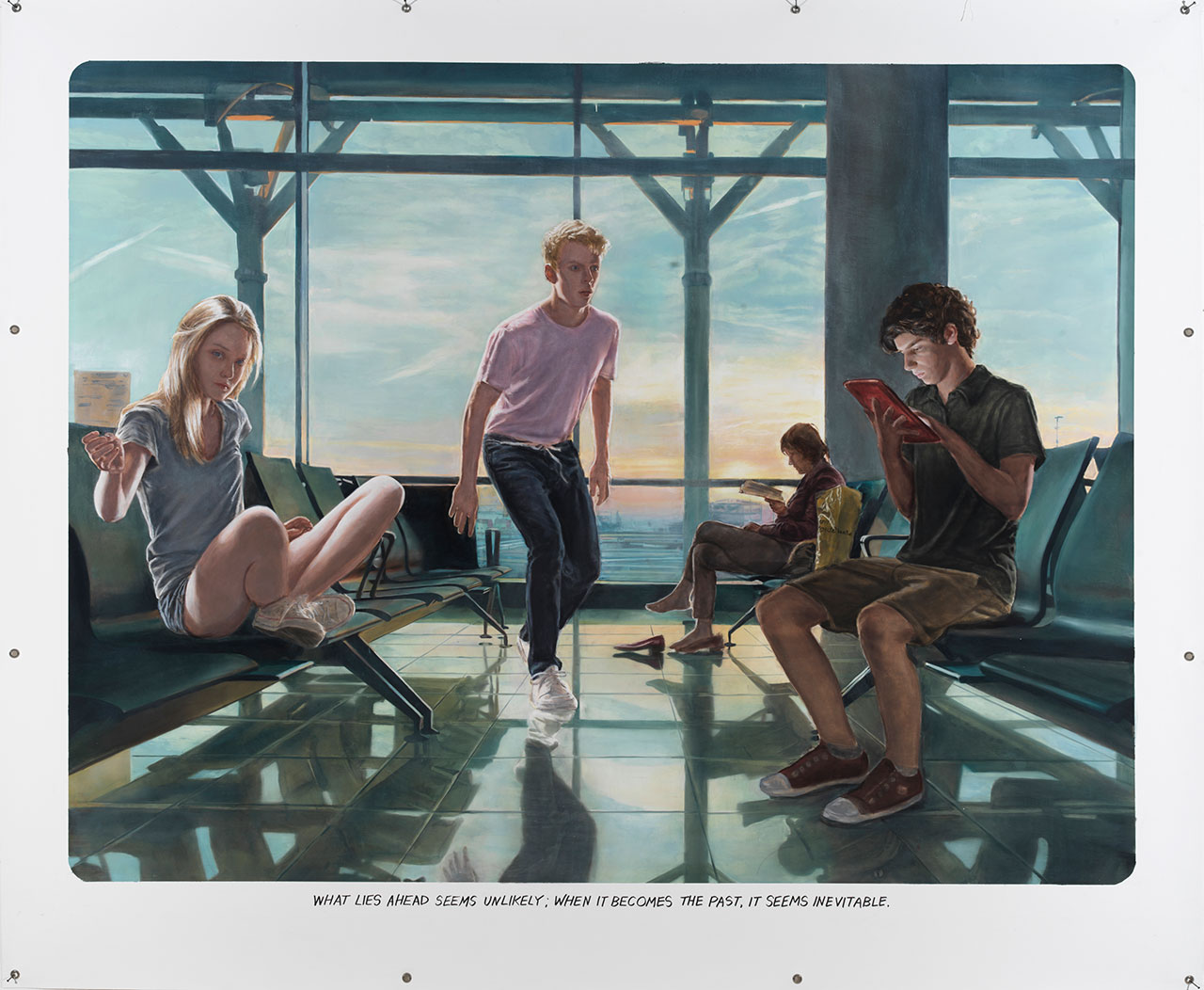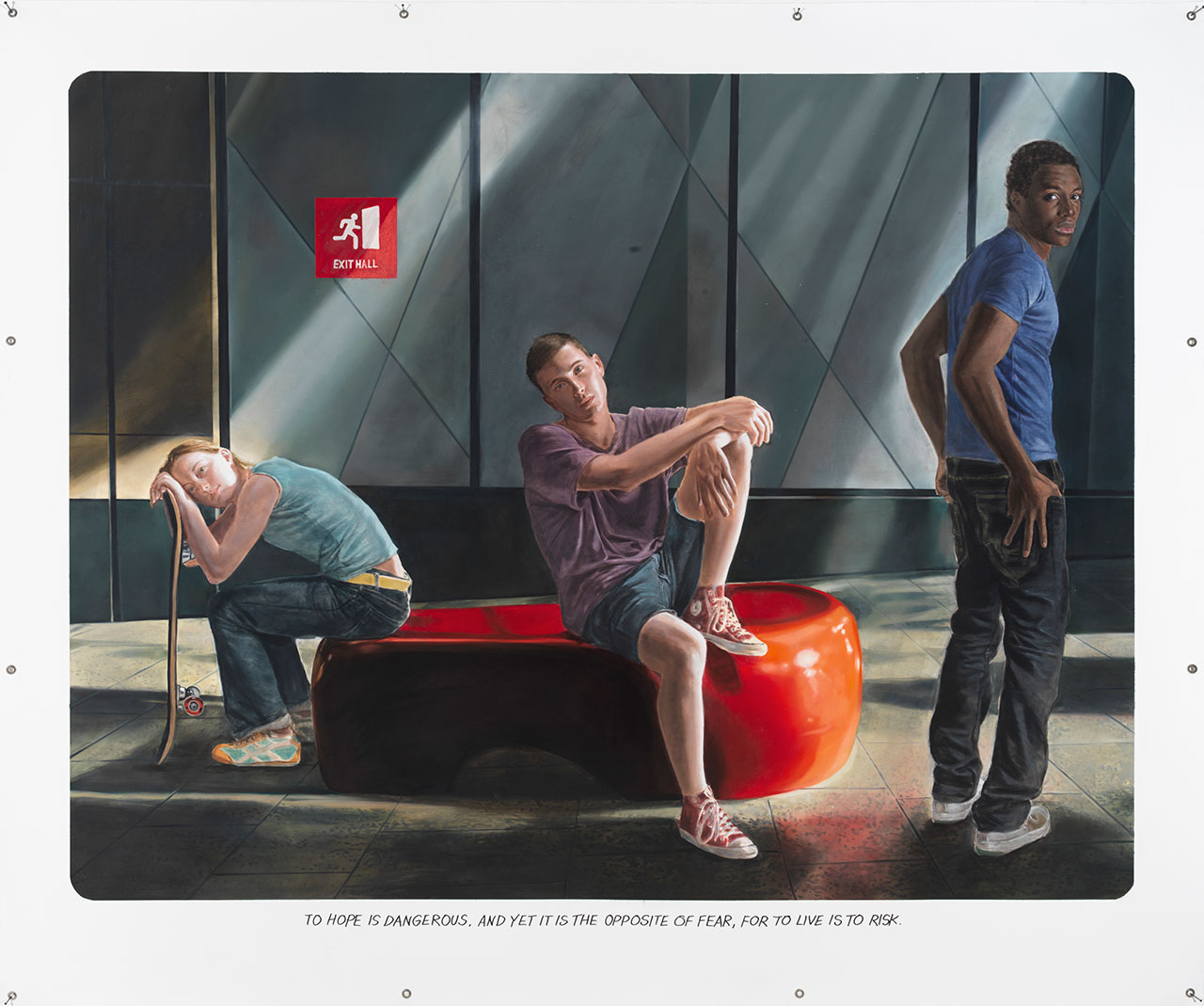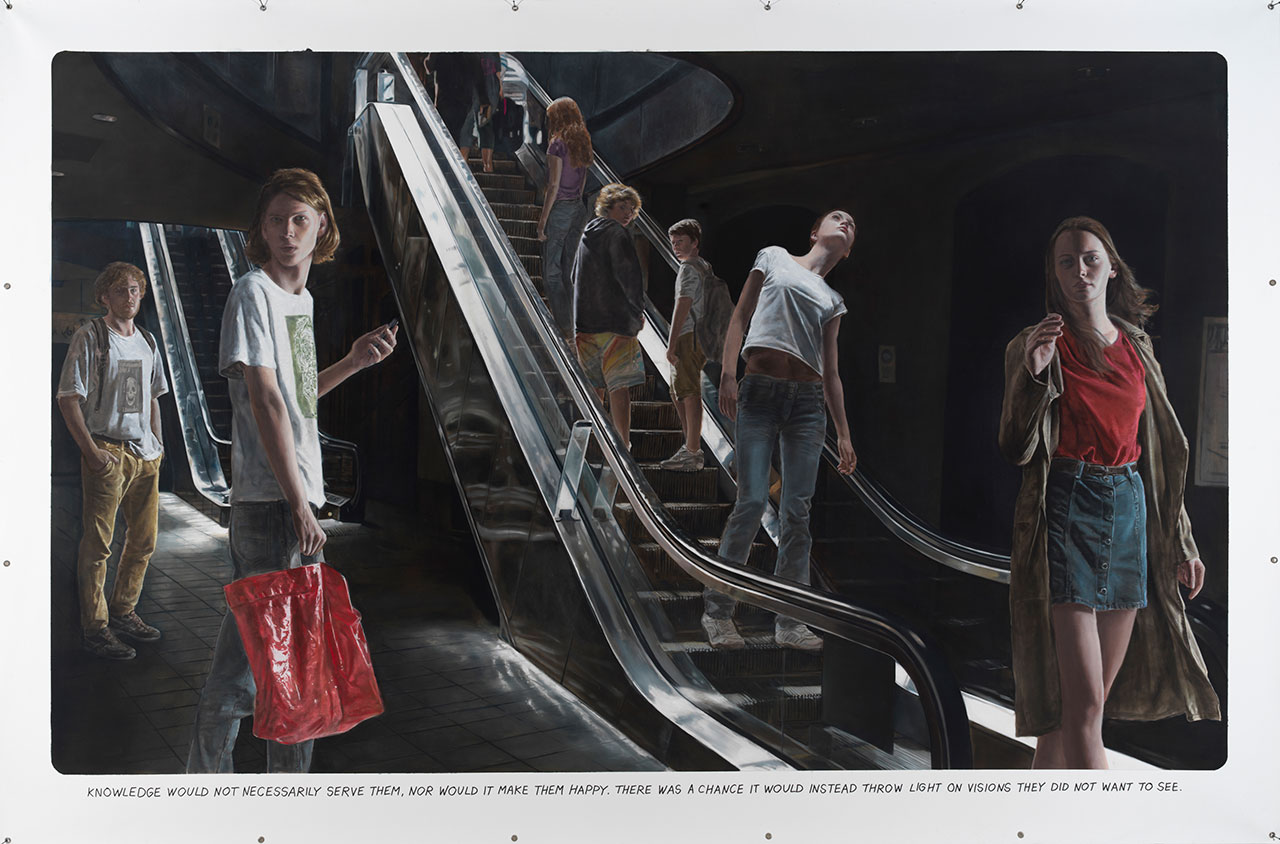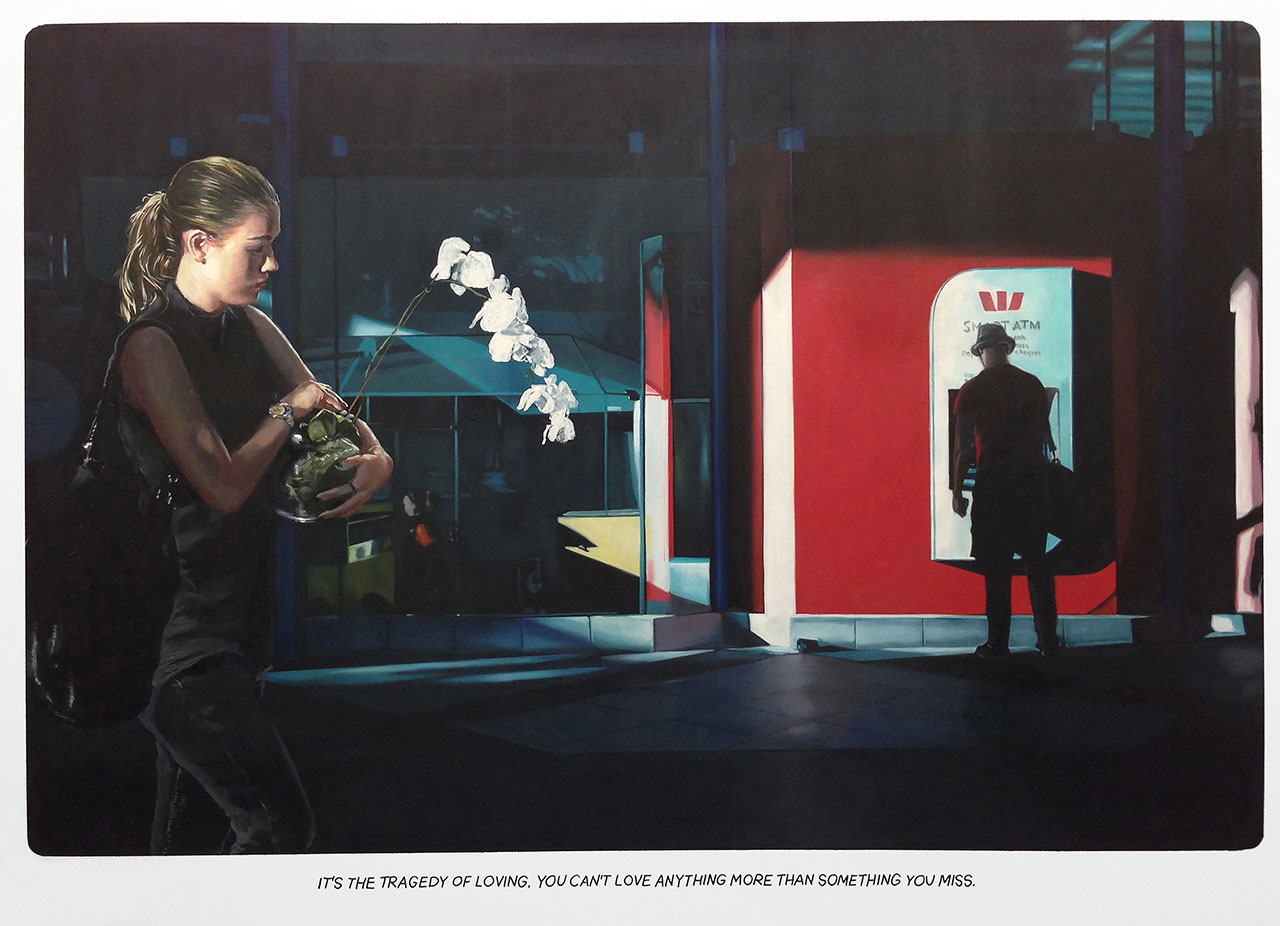PRESENTATION: Muntean/Rosenblum-Mirror Of Thoughts
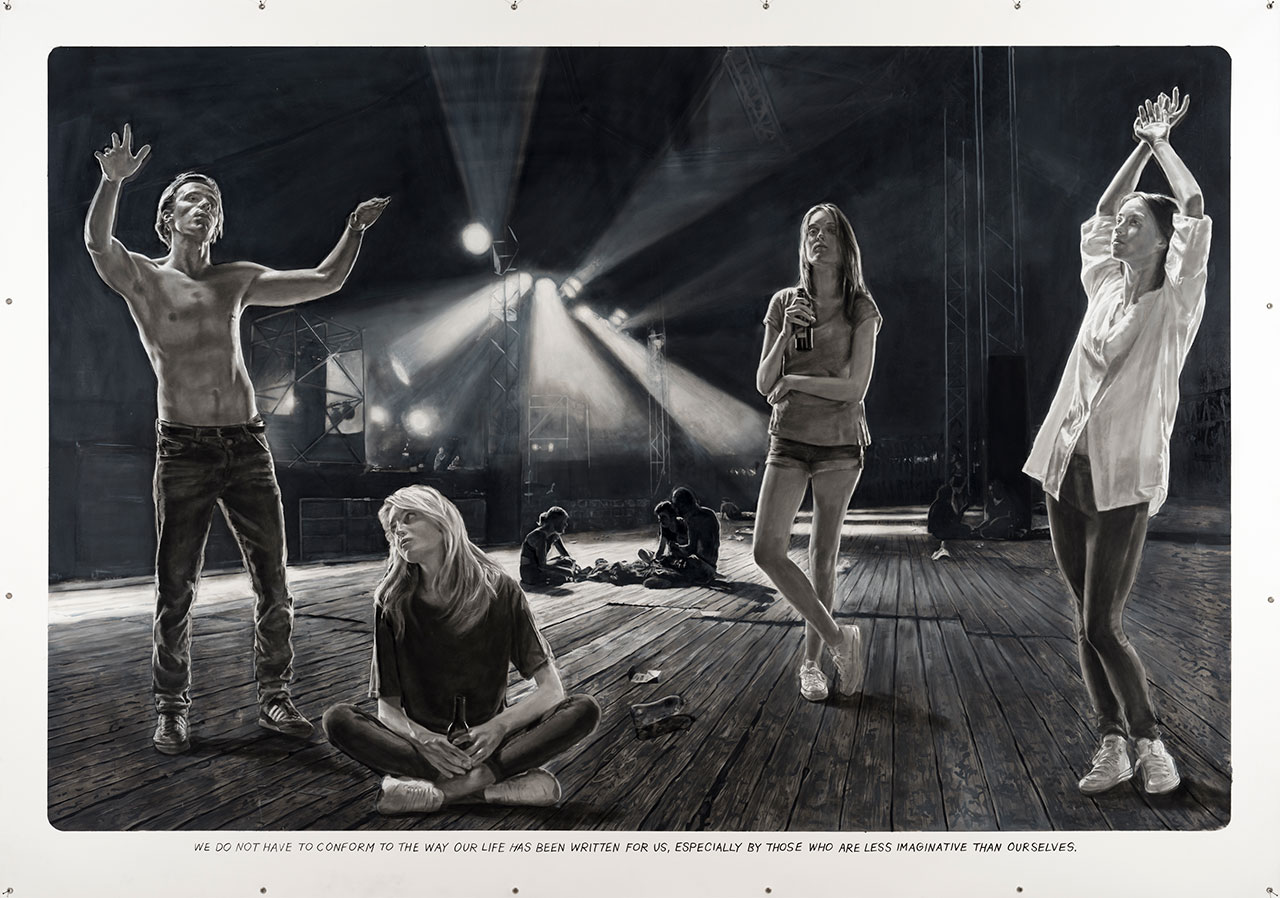 Since the 1990s, the two artists Markus Muntean and Adi Rosenblum have worked together. In their predominantly pictorial oeuvre, they combine their identities in an impressive way to create an artistic signature. As if looking through a magnifying glass, the artists duo address central themes of our time: the ambivalence of human existence, the growing insecurity of the individual, and a pervasive sense of transience.
Since the 1990s, the two artists Markus Muntean and Adi Rosenblum have worked together. In their predominantly pictorial oeuvre, they combine their identities in an impressive way to create an artistic signature. As if looking through a magnifying glass, the artists duo address central themes of our time: the ambivalence of human existence, the growing insecurity of the individual, and a pervasive sense of transience.
By Dimitris Lempesis
Photo: Städel Museum Archive
Markus Muntean and Adi Rosenblum present “Mirror Of Thoughts”, a solo exhibition with a video work and eleven large-format paintings – including two new works – set in places of transit: shopping malls, airport halls, hotels and offices. Immersed in their own thoughts, the young protagonists focus on smartphones or in the distance, are on the move, or look at the viewers bored or annoyed. Muntean/Rosenblum’s works move between the influences of past art eras and contemporary pop-cultural phenomena. While her compositions are firmly anchored in the pictorial memory of art history and refer to famous masterpieces from the Renaissance to modernity, her figures are entirely taken from the present time. They come from an image archive created over the years, which feeds on photographs found in lifestyle magazines, the Internet or from own photo shoots. Based on this rich collection of images, the artist duo uses the means of painting to create peculiar scenes: amidst anonymous metropolitan backdrops, the dramatically arranged young people seem like isolated extras in a contemporary play. In their composition strange and at the same time familiar, the paintings convey an atmosphere of lethargy and indifference. It is a painful but also liberating moment that marks the transition from youth to adulthood – a state of suspension. Like under a burning glass, Muntean/Rosenblum approach central themes of our time: the ambivalences of human existence, the growing insecurity of the individual and the pervasive sense of transience. Their visual worlds move between reality and illusion. While the scenes of her paintings appear coherent at first glance, certain details reveal that they could never have taken place in this way: looks and actions of the depicted people diverge unnaturally from each other, overlap and do not fit into the situation depicted. This effect results from the work process of the paintings, in which material from the artist duo’s image archive is first assembled into a digital collage and then transferred to the canvas. The artist duo seldom stretches the canvases, which are up to almost five metres wide, onto wedge frames, but attaches them directly to the walls. The relation of her compositions to important works of art history is sometimes more or less obvious, for example by taking up concrete motifs or by subtle allusions such as the use of central perspective as the supreme achievement of modern painting. Muntean/Rosenblum’s depictions are not to be understood in terms of photorealism. The framing by a white border, similar to that in a comic book, additionally eliminates the illusionism of painting as a “window to the world”. In the lower field of the painting, concise quotations from literary works by writers such as Fyodor Dostoyevsky, Deborah Levy, Rebecca Solnit or Virginia Woolf open up another, tense level, which, however, does not establish a direct relationship between image and word and consequently fails to provide a reliable approach to interpretation. The title of the exhibition at the Städel Museum is taken from the work “Untitled (The earth is literally a mirror …)” (2018). It is a quotation from Saul Bellow’s 1970 novel “Mr. Sammler’s Planet” The transitors, as shown in the works of the exhibition “Mirror of Thoughts”, are also referred to as non-places. According to the French anthropologist Marc Augé, they do not have their own identity, history or relationship. There is a certain ambivalence inherent in them, which is echoed in the concept of the works. People who are in airports, waiting areas, metro stations, hotels or offices, for example, enter into a contract with the purchase of a plane ticket. They lose their status as individuals and become guests, passengers or customers. Even the young people in their paintings have no identity. They were erased in the course of the work: stripped of their original task, they are not assigned a new action even in the new visual context. For example, the posture of the central figure in “Untitled (What lies ahead …): (2023) not in the situation at the airport. Inimitable details in the paintings point to a transformation from the individual subject to the pure object in the works of Muntean/Rosenblum. The emergency exit sign in “Untitled (To hope is dangerous …)” (2023) for example is addressed to every sighted person and the ATM in “Untitled (It’s the tragedy of …)” (2016) also communicates with everyone equally. A mysterious hotel scene in the work “Untitled (To go wrong …)” (2010) shows how much the resulting anonymity can be associated with loneliness. Although the two figures are in a private room, no personal relationship is apparent between them. With the open-plan office in “Untitled (Nothing fixes a thing …)” (2010), the artist duo provides the appropriate stage for the objectification of the human being, who here becomes an employee without a personality. The work of Muntean/Rosenblum also encompasses performance and video art. The film “This Is Not An Exit” (2017) talks about how much strength and effort it can take to develop and shape one’s own identity. On an abandoned building with modern architecture, the artist duo stage two parkour runners who sometimes seem serious and exhausted. They can be seen in pause situations or shortly before their actual activity, accompanied by a specially composed, repetitive soundtrack that reproduces fragments from Gertrude Stein’s novel The Making of Americans. The story, published in 1925, explores the history and development of American families and individual personalities, and makes it clear that a person’s identity depends not only on his or her individual characteristics, but also on the relationships and connections he or she maintains with other people.
Photo: Muntean/Rosenblum, Untitled (“We do not have. . . ”), 2023, oil, pastel chalk on canvas, 208 x 296 cm, Stahlberg Collection, Coburg, © Muntean/Rosenblum, Photo: © Sandro E. E. Zanzinger Photography 2023
Info: Curator: Svenja Grosser, Städel Museum, Schaumainkai 63, Frankfurt am Main, Germany, Duration: 3/5-1/12/2024, Days & Hours: Tue-Wed & Fri-Sun 10:00-18:00, Thu 10:0-21:00, www.staedelmuseum.de/
